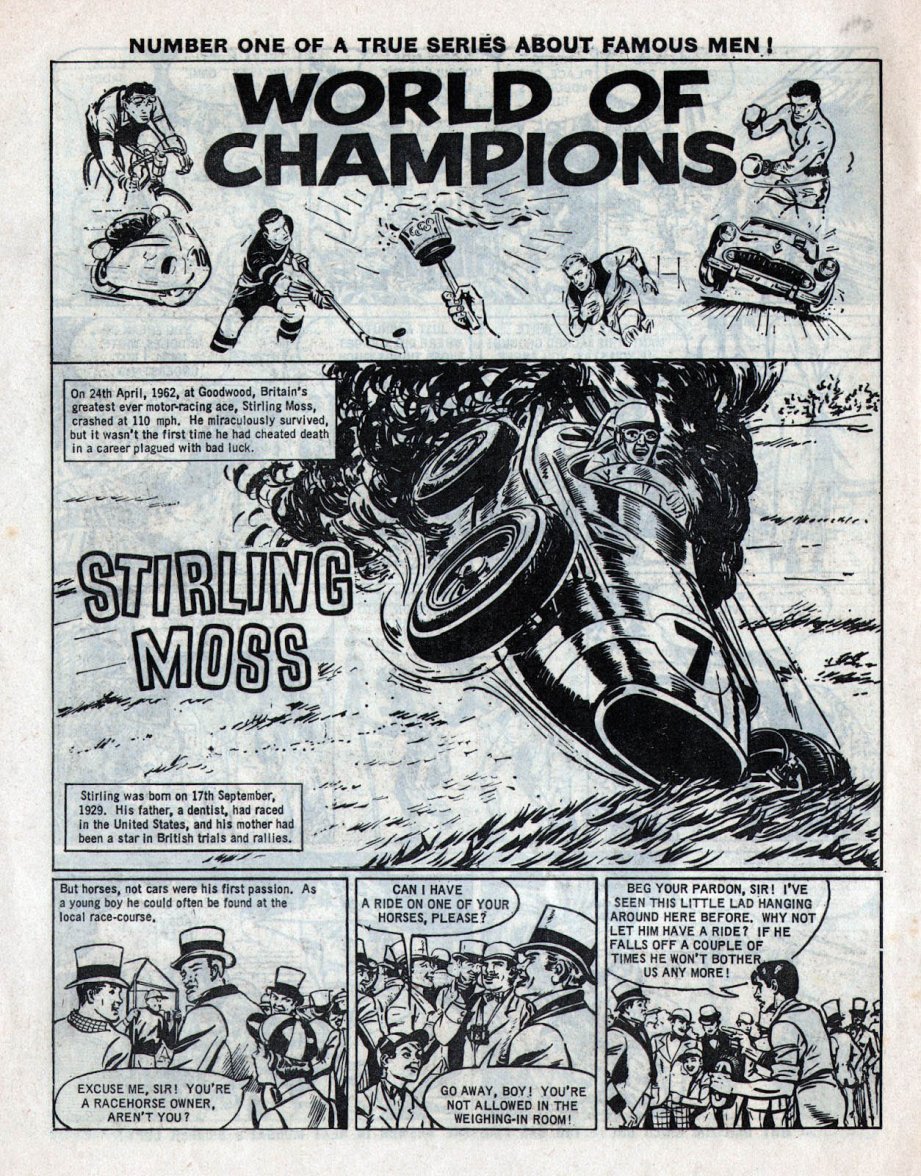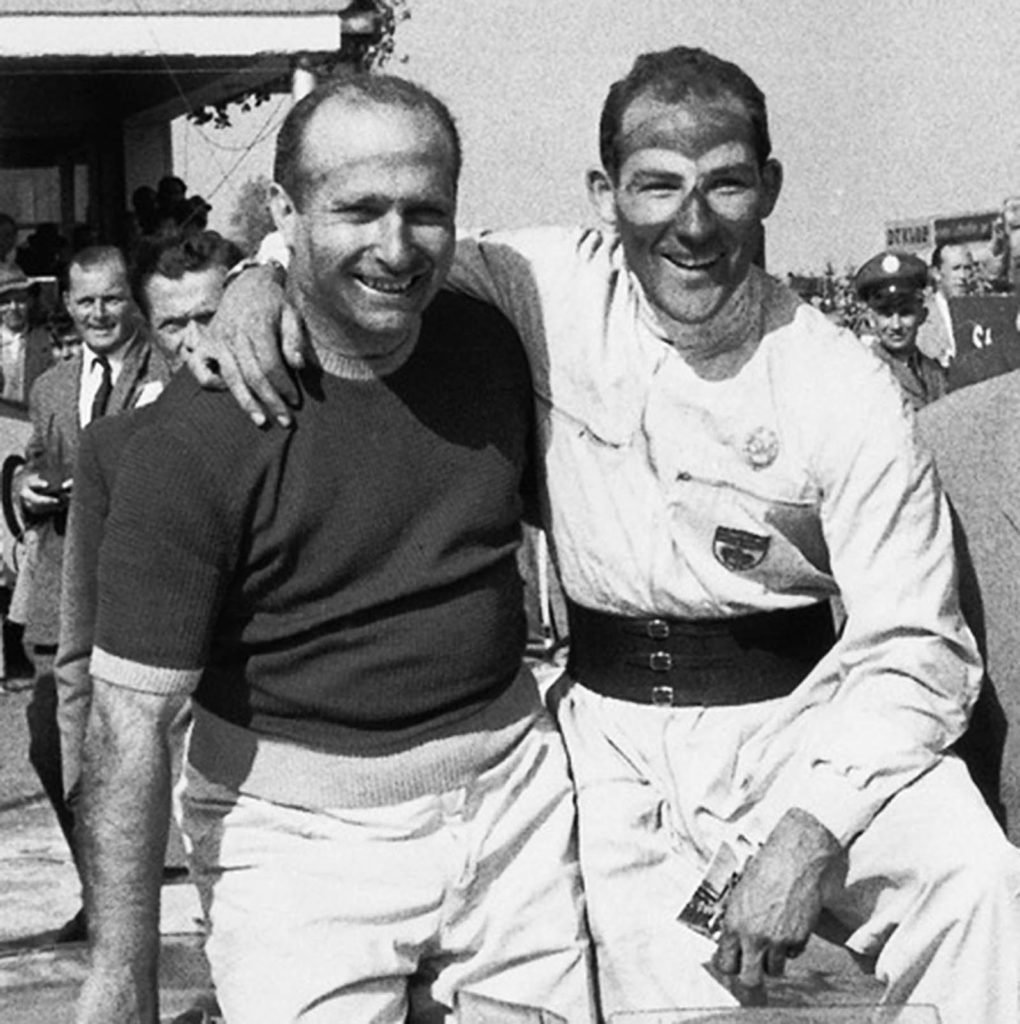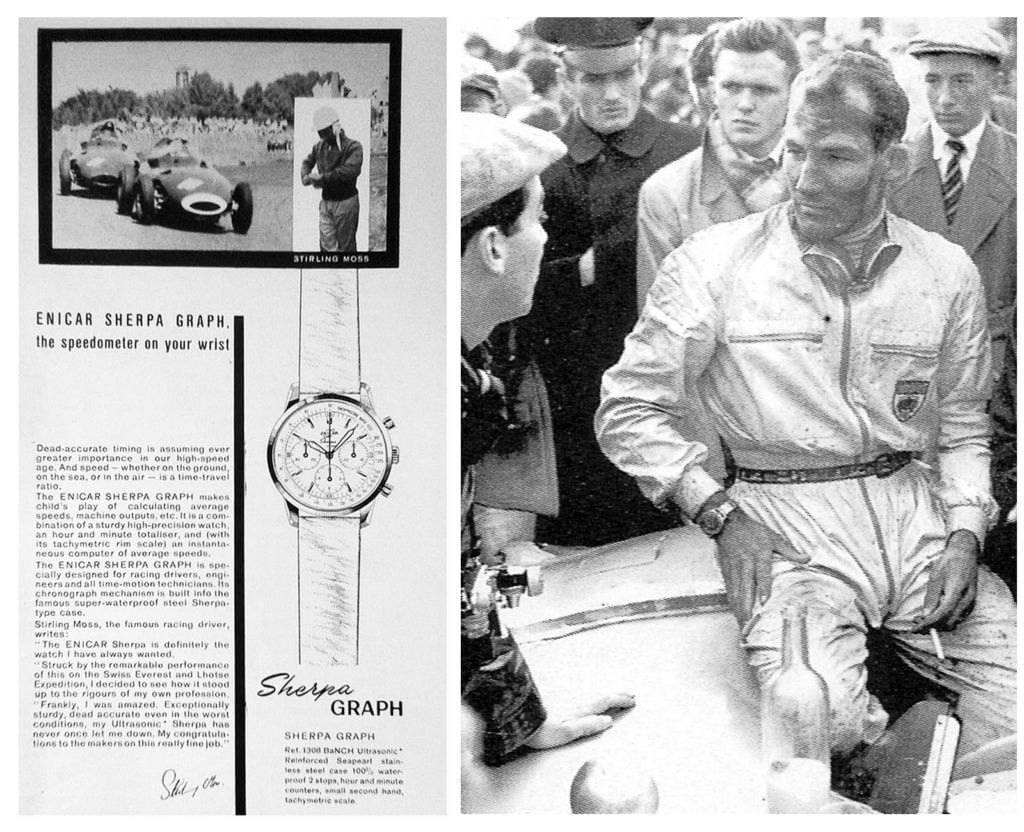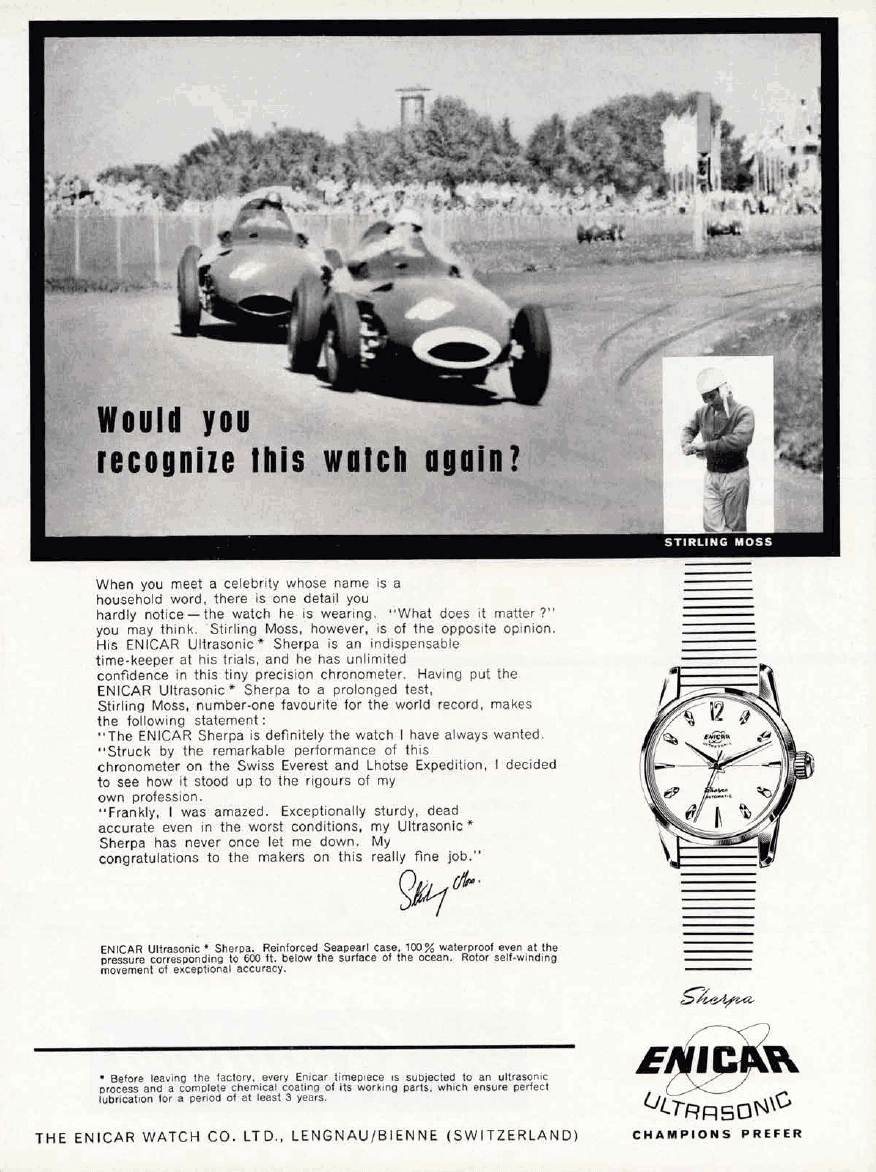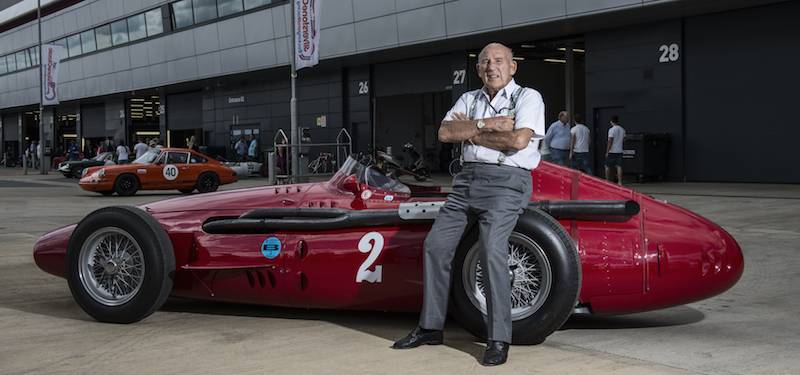jhross98
·Stirling Moss, One of the Greatest Drivers of All Time, Dies at 90
Known for his brash, puckish persona, he won 212 of his 529 races, including 16 Grand Prix victories, but never won the Grand Prix Championship title.
Image
Stirling Moss in 1955. His fellow drivers considered him the best in the world.Credit...Hulton Archive/Hulton Archive, via Getty Images
By Douglas Martin
Boys saw him as the swashbuckling racecar driver whom many considered the best in the world. Men saw this and more: Moss made more than $1 million a year, more than any other driver, and was invariably surrounded by the jet-set beauties who followed the international racing circuit.
Moss died quietly on Sunday at his home in London as one of his sport’s great legends. He was 90 and had been ill for some time.
“It was one lap too many,” his wife, Susie, told The Associated Press. “He just closed his eyes.”
Moss was a modern-day St. George, upholding the honor of England by often driving English cars, even though German and Italian ones were superior. Polls showed he was as popular as the queen.
Moss waving to spectators from a 1955 Ferrari 750 Monza during the Ennstal-Classic rally in 2013.Credit...Leonhard Foeger/Reuters
“To race a car through a turn at maximum possible speed when there is a great lawn to all sides is difficult,” he said in an interview with The New York Times Magazine in 1961, “but to race a car at maximum speed through a turn when there is a brick wall on one side and a precipice on the other — ah, that’s an achievement!”
He raced for 14 years, won 212 of his 529 races in events that included Grand Prix, sports cars and long-distance rallying, in 107 different types of car.
He set the world land speed record on the salt flats of Utah in 1957. He won more than 40 percent of the races he entered, including 16 Grand Prix. For four consecutive years, 1955-58, he finished second in the world Grand Prix championship. And in each of the next three years, he placed third.
Moss at the wheel of a Ferguson racing car in 1961. He once asked why people walk, since God gave them feet that fit automotive pedals.Credit...Associated Press
A sinewy 5-foot-7, he favored short sleeves so he could get a suntan in his open cockpit. His seemingly casual slouch as he pushed howling machines to their limits was his signature. And his language elevated his sport almost to poetry.
Motion, he said, was tranquillity. Why, he wondered, do people walk, since God gave them feet that fit automotive pedals?
If people watch racing to witness the point where courage converges with catastrophe, Moss defined it.
In 1962 at the Goodwood Circuit racetrack in England’s West Sussex County, a plume of fire shot from his Lotus 18/21 car. The crowd gasped. As Moss tried to pass Graham Hill, his car veered and slammed into an eight-foot-high earthen bank.
It took more than a half-hour to free Moss from the wreckage. His left eye and cheekbone were shattered, his left arm broken and his left leg broken in two places.
An X-ray revealed a far worse injury. The right side of his brain was detached from his skull. He was in a coma for 38 days, and paralyzed on one side of his body for six months. He remembered nothing of the disaster. He considered hypnosis to recover the memory, but a psychiatrist said that might cause the paralysis to return.
When he left the hospital, he took all 11 nurses who had treated him to dinner, followed by a trip to the theater. A year later, he returned to Goodwood and pushed a Lotus to 145 m.p.h. on a wet track. He realized he was no longer unconsciously making the right moves. He said he felt like he had lost his page in a book.
Though he believed he remained a better driver than all but 10 or 12 in the world, that was not good enough. He retired at 33.
Moss was more than his talent. He was a beautiful name, one that still connotes high style a half-century after his crash, evoking an era of blazers and cravats, of dance bands and cigarette holders. One legend had him driving hundreds of miles in a vain effort to introduce himself to Miss Italy the night before a big race. His 16 books cemented his legend.
Image
Moss leaves the hospital after being injured in a crash in 1962. He was in a coma for 38 days, and paralyzed on one side of his body for six months. Credit...Central Press/Agence France-Presse — Getty Images
So for a couple of generations, British traffic cops sneeringly asked speeding motorists, “Who do you think you are, Stirling Moss?” (Moss, who had been knighted, was once asked that question, and answered, “Sir Stirling, please.”)
Moss said a name like Bill Smith just would not have done. But what about Hamish, the old Scottish name his mother, Aileen, had proposed? His father, Alfred, deemed that ghastly. The compromise was Stirling, the name of a town near his mother’s family home.
Stirling Craufurd Moss was born in London on Sept. 17, 1929. Both his father and mother had raced cars, with his father having competed twice in the Indianapolis 500, finishing 16th in 1924, while studying dentistry in Indiana. Stirling grew up excelling at horsemanship, but said he gave it up because horses were hard to steer.
His passion was cars.
As a boy, Stirling was allowed to sit on his father’s lap and steer the family car. When he was 10 he begged for and received the present of a very old and dilapidated seven-horsepower Austin. He made his own private racing circuit on the family farm. At 18, he got his first driver’s license and bought into a Cooper 500 racing car, winning 11 of the first 15 races he entered.
Within two years, he was racing across Europe in numerous classes of cars. In 1953, he became a full-time driver on the Grand Prix circuit, the sport’s big league. His first Grand Prix vehicle was his own Maserati, not a machine from the respected Maserati stable.
In 1955, he joined the Mercedes-Benz team, led by his idol, Juan Manuel Fangio. That year, Moss became the first British driver to win the British Grand Prix, edging out Fangio by two-tenths of a second. For years, Moss asked Fangio if he had lost on purpose. Fangio kept saying no.
In 1956, Moss again drove a Maserati, followed by two years with the British Vanwall team. He won nine of 23 events. From 1959 to 1961, he drove two British makes, Cooper and Lotus, and won half of the 54 events he entered in his last year of racing.
Image
Moss test drives a 1959 Maserati Tipo 60. He retired at 33, feeling his skills had diminished after he was badly injured in a crash.Credit...Maserati
Moss’s first two marriages ended in divorce. Besides his wife, Susie, he is survived by his son, Elliot; his daughter, Allison Bradley; and several grandchildren. His sister, Pat Moss Carlsson, one of the most successful female rally drivers of all time, died in 2008.
After his racing career, Moss made a tidy living selling his name and making personal appearances. “Basically, I’m an international prostitute,” he said. He made successful real estate investments and returned to the track for vintage car meets. He puttered around London on a motor scooter.
Moss, the ultimate pro, once observed that there are no professionals at dying — although he had practiced. He was sure he was “a goner” after his steering column snapped at over 160 m.p.h. in a race in Monza, Italy, in 1958.
As he staggered away from the wreckage, he thought, “Well, if this is hell, it’s not very hot, or if it’s heaven, why is it so dusty?”
Sign Up
Credit...via Deborah Walsh
Known for his brash, puckish persona, he won 212 of his 529 races, including 16 Grand Prix victories, but never won the Grand Prix Championship title.
Image
Stirling Moss in 1955. His fellow drivers considered him the best in the world.Credit...Hulton Archive/Hulton Archive, via Getty Images
By Douglas Martin
- April 12, 2020, 11:53 a.m. ET
Boys saw him as the swashbuckling racecar driver whom many considered the best in the world. Men saw this and more: Moss made more than $1 million a year, more than any other driver, and was invariably surrounded by the jet-set beauties who followed the international racing circuit.
Moss died quietly on Sunday at his home in London as one of his sport’s great legends. He was 90 and had been ill for some time.
“It was one lap too many,” his wife, Susie, told The Associated Press. “He just closed his eyes.”
Moss was a modern-day St. George, upholding the honor of England by often driving English cars, even though German and Italian ones were superior. Polls showed he was as popular as the queen.
Moss waving to spectators from a 1955 Ferrari 750 Monza during the Ennstal-Classic rally in 2013.Credit...Leonhard Foeger/Reuters
“To race a car through a turn at maximum possible speed when there is a great lawn to all sides is difficult,” he said in an interview with The New York Times Magazine in 1961, “but to race a car at maximum speed through a turn when there is a brick wall on one side and a precipice on the other — ah, that’s an achievement!”
He raced for 14 years, won 212 of his 529 races in events that included Grand Prix, sports cars and long-distance rallying, in 107 different types of car.
He set the world land speed record on the salt flats of Utah in 1957. He won more than 40 percent of the races he entered, including 16 Grand Prix. For four consecutive years, 1955-58, he finished second in the world Grand Prix championship. And in each of the next three years, he placed third.
Moss at the wheel of a Ferguson racing car in 1961. He once asked why people walk, since God gave them feet that fit automotive pedals.Credit...Associated Press
A sinewy 5-foot-7, he favored short sleeves so he could get a suntan in his open cockpit. His seemingly casual slouch as he pushed howling machines to their limits was his signature. And his language elevated his sport almost to poetry.
Motion, he said, was tranquillity. Why, he wondered, do people walk, since God gave them feet that fit automotive pedals?
If people watch racing to witness the point where courage converges with catastrophe, Moss defined it.
In 1962 at the Goodwood Circuit racetrack in England’s West Sussex County, a plume of fire shot from his Lotus 18/21 car. The crowd gasped. As Moss tried to pass Graham Hill, his car veered and slammed into an eight-foot-high earthen bank.
It took more than a half-hour to free Moss from the wreckage. His left eye and cheekbone were shattered, his left arm broken and his left leg broken in two places.
An X-ray revealed a far worse injury. The right side of his brain was detached from his skull. He was in a coma for 38 days, and paralyzed on one side of his body for six months. He remembered nothing of the disaster. He considered hypnosis to recover the memory, but a psychiatrist said that might cause the paralysis to return.
When he left the hospital, he took all 11 nurses who had treated him to dinner, followed by a trip to the theater. A year later, he returned to Goodwood and pushed a Lotus to 145 m.p.h. on a wet track. He realized he was no longer unconsciously making the right moves. He said he felt like he had lost his page in a book.
Though he believed he remained a better driver than all but 10 or 12 in the world, that was not good enough. He retired at 33.
Moss was more than his talent. He was a beautiful name, one that still connotes high style a half-century after his crash, evoking an era of blazers and cravats, of dance bands and cigarette holders. One legend had him driving hundreds of miles in a vain effort to introduce himself to Miss Italy the night before a big race. His 16 books cemented his legend.
Image
Moss leaves the hospital after being injured in a crash in 1962. He was in a coma for 38 days, and paralyzed on one side of his body for six months. Credit...Central Press/Agence France-Presse — Getty Images
So for a couple of generations, British traffic cops sneeringly asked speeding motorists, “Who do you think you are, Stirling Moss?” (Moss, who had been knighted, was once asked that question, and answered, “Sir Stirling, please.”)
Moss said a name like Bill Smith just would not have done. But what about Hamish, the old Scottish name his mother, Aileen, had proposed? His father, Alfred, deemed that ghastly. The compromise was Stirling, the name of a town near his mother’s family home.
Stirling Craufurd Moss was born in London on Sept. 17, 1929. Both his father and mother had raced cars, with his father having competed twice in the Indianapolis 500, finishing 16th in 1924, while studying dentistry in Indiana. Stirling grew up excelling at horsemanship, but said he gave it up because horses were hard to steer.
His passion was cars.
As a boy, Stirling was allowed to sit on his father’s lap and steer the family car. When he was 10 he begged for and received the present of a very old and dilapidated seven-horsepower Austin. He made his own private racing circuit on the family farm. At 18, he got his first driver’s license and bought into a Cooper 500 racing car, winning 11 of the first 15 races he entered.
Within two years, he was racing across Europe in numerous classes of cars. In 1953, he became a full-time driver on the Grand Prix circuit, the sport’s big league. His first Grand Prix vehicle was his own Maserati, not a machine from the respected Maserati stable.
In 1955, he joined the Mercedes-Benz team, led by his idol, Juan Manuel Fangio. That year, Moss became the first British driver to win the British Grand Prix, edging out Fangio by two-tenths of a second. For years, Moss asked Fangio if he had lost on purpose. Fangio kept saying no.
In 1956, Moss again drove a Maserati, followed by two years with the British Vanwall team. He won nine of 23 events. From 1959 to 1961, he drove two British makes, Cooper and Lotus, and won half of the 54 events he entered in his last year of racing.
Image
Moss test drives a 1959 Maserati Tipo 60. He retired at 33, feeling his skills had diminished after he was badly injured in a crash.Credit...Maserati
Moss’s first two marriages ended in divorce. Besides his wife, Susie, he is survived by his son, Elliot; his daughter, Allison Bradley; and several grandchildren. His sister, Pat Moss Carlsson, one of the most successful female rally drivers of all time, died in 2008.
After his racing career, Moss made a tidy living selling his name and making personal appearances. “Basically, I’m an international prostitute,” he said. He made successful real estate investments and returned to the track for vintage car meets. He puttered around London on a motor scooter.
Moss, the ultimate pro, once observed that there are no professionals at dying — although he had practiced. He was sure he was “a goner” after his steering column snapped at over 160 m.p.h. in a race in Monza, Italy, in 1958.
As he staggered away from the wreckage, he thought, “Well, if this is hell, it’s not very hot, or if it’s heaven, why is it so dusty?”
Sign Up
Credit...via Deborah Walsh

